PanNiobium
Thermodynamic database for multi-component Nb-rich alloys
- Thermodynamic
- Mobility
- Thermophysical Property: Molar Volume; Surface Tension; Viscosity
PanNiobium
PanNiobium Quick Overview
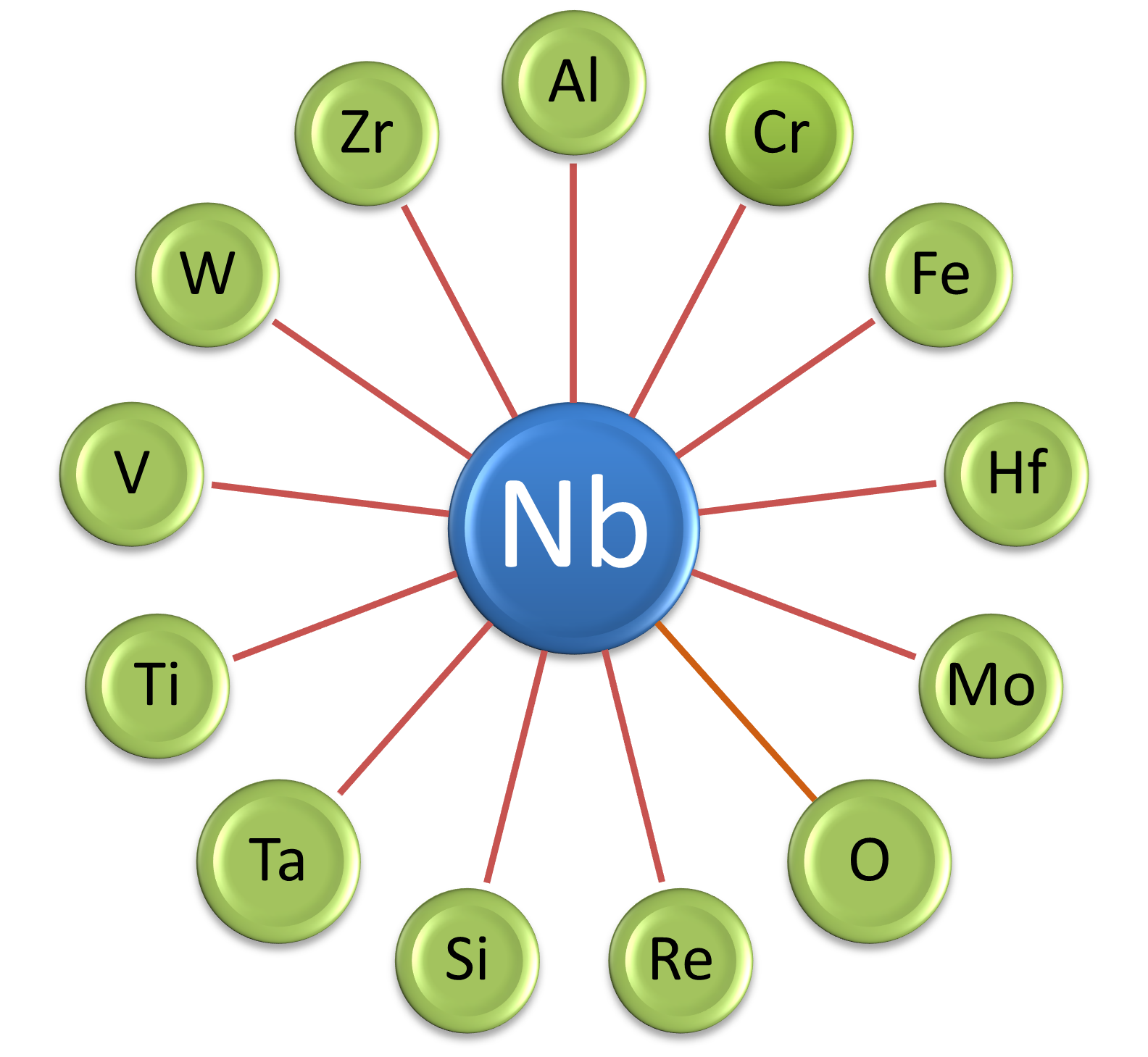
-
Number of components: 14
-
Number of phases: 192
-
Alloying elements: Al, Cr, Fe, Hf, Mo, Nb, O, Re, Si, Ta, Ti, V, W and Zr
PanNiobium – Thermodynamic database (TH), Mobility database (MB), and Thermophysical property (TP) database for multi-component Niobium-rich alloys.
- The PanNb_TH thermodynamic database consists of 14 components, 192 phases and 113 fully assessed binary and ternary systems. The database is validated by many refractory alloys.
- The PanNb_MB mobility database assessed mobility model parameters for the Liquid, Bcc, Fcc, and Hcp solution phases. It is compatible with the PanNb_TH and suitable for the simulation of diffusion controlled phenomena of multi-component niobium alloys.
- The PanNb_TP thermophysical property database includes the molar volume database covers all the 192 phases assessed in the PanNb_TH, the surface tension and viscosity properties for the liquid phase. It can be combined with the thermodynamic database for the simulation of thermo-physical properties of Nb-based alloys, such as density, thermal expansion, and solidification shrinkage.
Applications
An example compares the simulated solidification paths with an experimentally observed micrograph for the six- component Nb-22Ti-2Hf-4Cr-3Al-16Si alloy. The primary solidified phase is Nb5Si3.
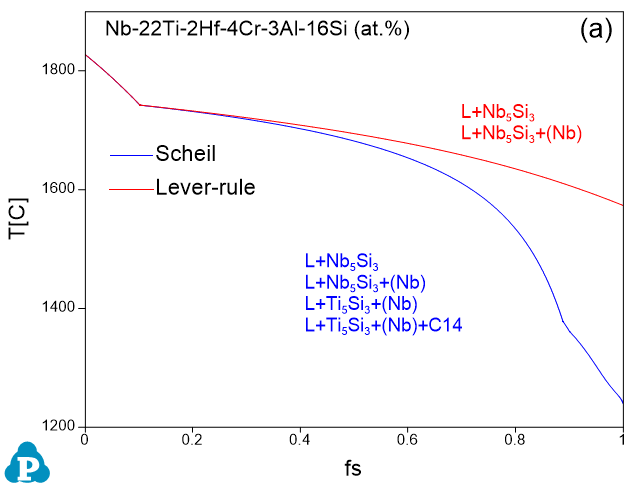
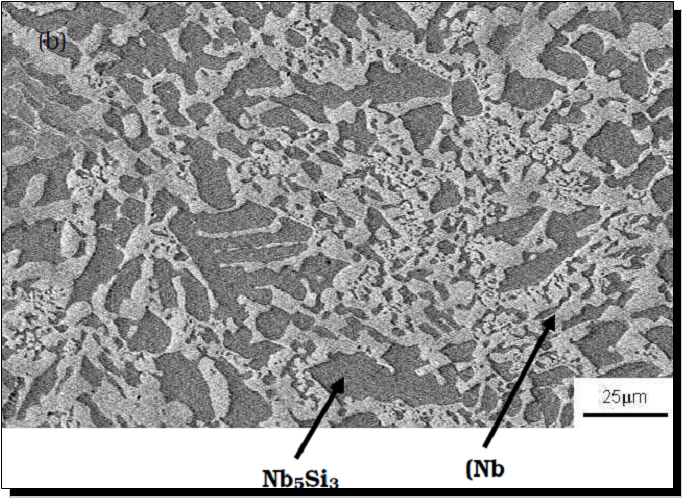
Simulated solidification paths for the Nb-22Ti-2Hf-4Cr-3Al-16Si alloy using Scheil and lever-rule models with experimental observation
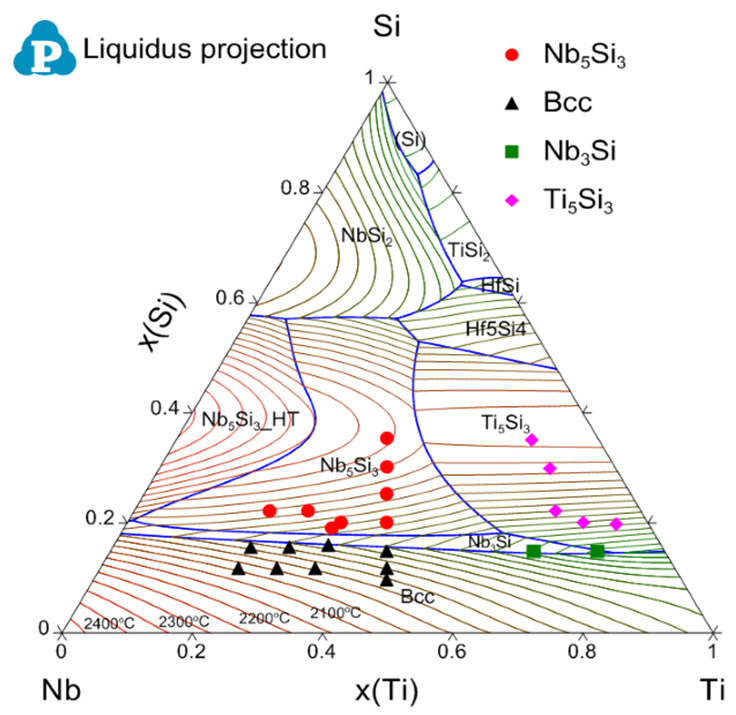
Calculated liquidus projection of the Nb-Ti-Si system together with experimental data
The calculated liquidus projection of the Nb-Ti-Si system with experimental data. The symbols of experimental data denote that the primary solidification phases observed in the as-cast microstructure of the alloy
Coupling PanNb_TH thermodynamic database with PanNb_MB mobility database, user can calculate mobility and diffusivity, and simulate diffusion controlled phenomena. Integrating PanNb_TH with PanNb_MV, molar volume, density, thermal expansion, and other properties can be calculated for niobium alloys. This is an example which compares the calculated and measured molar volume of Nb-Ti Bcc alloys.
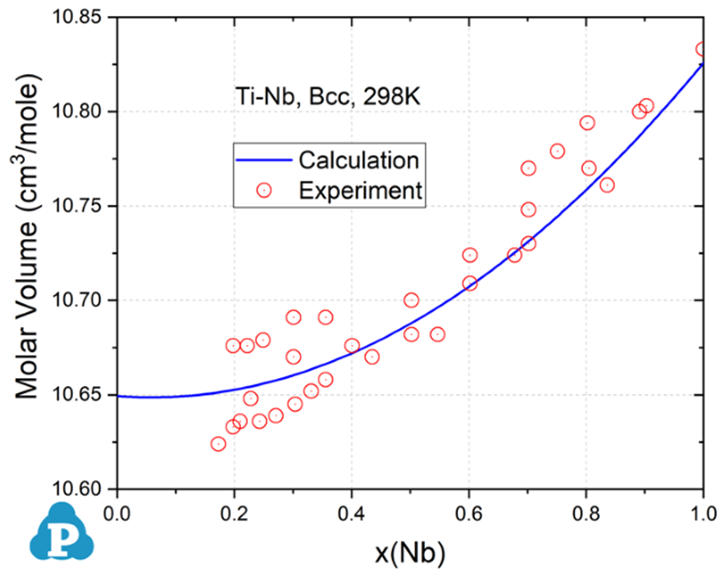
Calculated and measured molar volume of the Nb-Ti Bcc binary alloys at 298K

